Related Research Articles
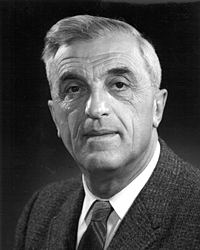
Felix Bloch was a Swiss-American physicist and Nobel physics laureate who worked mainly in the U.S. He and Edward Mills Purcell were awarded the 1952 Nobel Prize for Physics for "their development of new ways and methods for nuclear magnetic precision measurements." In 1954–1955, he served for one year as the first director-general of CERN. Felix Bloch made fundamental theoretical contributions to the understanding of ferromagnetism and electron behavior in crystal lattices. He is also considered one of the developers of nuclear magnetic resonance.

The Pauli effect or Pauli's device corollary is the supposed tendency of technical equipment to encounter critical failure in the presence of certain people. The term was coined after mysterious anecdotal stories involving Austrian theoretical physicist Wolfgang Pauli, describing numerous instances in which demonstrations involving equipment suffered technical problems only when he was present.
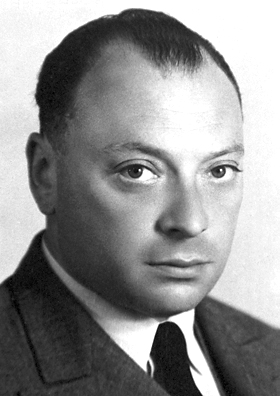
Wolfgang Ernst Pauli was an Austrian theoretical physicist and one of the pioneers of quantum physics. In 1945, after having been nominated by Albert Einstein, Pauli received the Nobel Prize in Physics for his "decisive contribution through his discovery of a new law of Nature, the exclusion principle or Pauli principle". The discovery involved spin theory, which is the basis of a theory of the structure of matter.

Martin Charles Gutzwiller was a Swiss-American physicist, known for his work on field theory, quantum chaos, and complex systems. He spent most of his career at IBM Research, and was also an adjunct professor of physics at Yale University.

Paul Hermann Scherrer was a Swiss physicist. Born in St. Gallen, Switzerland, he studied at Göttingen, Germany, before becoming a lecturer there. Later, Scherrer became head of the Department of Physics at ETH Zurich.
Ernst Carl Gerlach Stueckelberg was a Swiss mathematician and physicist, regarded as one of the most eminent physicists of the 20th century.
Wilhelm Lenz was a German physicist, most notable for his invention of the Ising model, and for his application of the Laplace–Runge–Lenz vector to the old quantum mechanical treatment of hydrogen-like atoms.

Karl Alexander Müller was a Swiss physicist and Nobel laureate. He received the Nobel Prize in Physics in 1987 with Georg Bednorz for their work in superconductivity in ceramic materials.
Gregor Wentzel was a German physicist known for development of quantum mechanics. Wentzel, Hendrik Kramers, and Léon Brillouin developed the Wentzel–Kramers–Brillouin approximation in 1926. In his early years, he contributed to X-ray spectroscopy, but then broadened out to make contributions to quantum mechanics, quantum electrodynamics, superconductivity and meson theory.

Nicholas Kemmer was a Russian-born nuclear physicist working in Britain, who played an integral and leading edge role in United Kingdom's nuclear programme, and was known as a mentor of Abdus Salam – a Nobel laureate in physics.
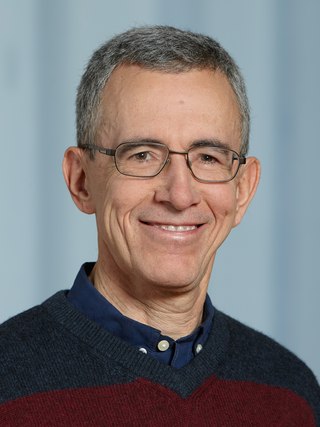
Ataç İmamoğlu is a Turkish-Swiss physicist working on quantum optics and quantum computation. His academic interests are quantum optics, semiconductor physics, and nonlinear optics.
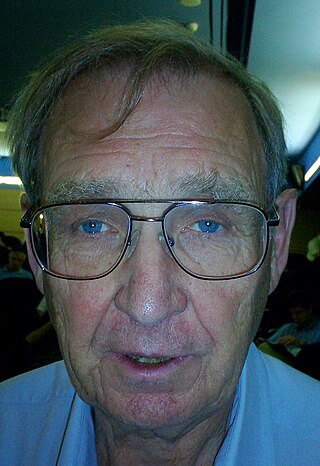
Hans Frauenfelder was an American physicist and biophysicist notable for his discovery of perturbed angular correlation (PAC) in 1951. In the modern day, PAC spectroscopy is widely used in the study of condensed matter physics. Within biophysics, he is known for his experimental and theoretical research on the dynamical behavior of protein tertiary structure.
Konrad Osterwalder is a Swiss mathematician and physicist, former Undersecretary-General of the United Nations, former Rector of the United Nations University (UNU), and Rector Emeritus of the Swiss Federal Institute of Technology Zurich. He is known for the Osterwalder–Schrader theorem.

Ernst Morgenthaler (1887–1962) was a Swiss painter. His wife Sasha Morgenthaler, née von Sinner (1893-1975), was a well-known doll manufacturer in Zurich. One of their sons, Fritz Morgenthaler, was a psychoanalyst and painter.

Markus Eduard Fierz was a Swiss physicist, particularly remembered for his formulation of spin–statistics theorem, and for his contributions to the development of quantum theory, particle physics, and statistical mechanics. He was awarded the Max Planck Medal in 1979 and the Albert Einstein Medal in 1989 for all his work.

Res Jost was a Swiss theoretical physicist, who worked mainly in constructive quantum field theory.
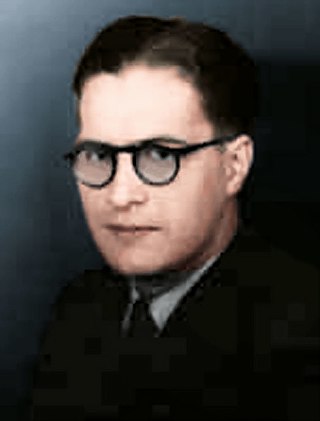
Josef Maria Jauch was a Swiss/American theoretical physicist, known for his work on quantum electrodynamics and on the foundations of quantum theory, and leader of the "Geneva School" of mathematical physics.

Ferdinand Gonseth (1890–1975) was a Swiss mathematician and philosopher.
Johann Jakob Burckhardt was a Swiss mathematician and crystallographer. He was an invited speaker at the International Congress of Mathematicians in 1936 in Oslo.
References
- ↑ Baeriswyl, Dionys; Droz, Michel; Malaspinas, Andreas (1986). "Charles P. Enz: A Short Biography". Helvetica Physica Acta. 59 (5): 807–810. doi:10.5169/seals-115761.